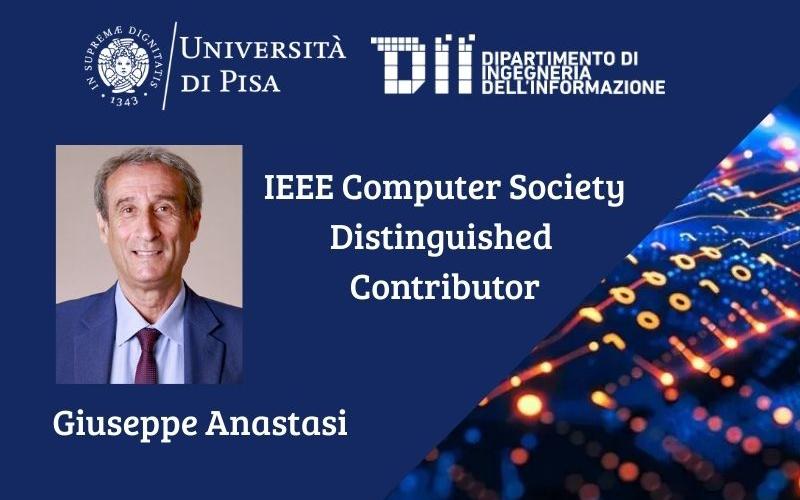La nomina a Distinguished Contributor (DC) premia i membri e gli affiliati della Computer Society che hanno apportato contributi tecnici significativi e continuativi alla IEEE Computer Society, alla...
Leggi tuttoDII Talks: Design and implementation of a satellite mission for Earth Observation

ONLINE SU TEAMS
23 e 30 APRILE ore 15.00
Abstract
This webinar, at the interface between science and technology, will explain how we address important questions about the Earth System and its evolution from the vantage point of space, using Earth Observation techniques.
In the first part of the webinar we will examine the rationale for Earth Observation, with particular reference to the oceans and the cryosphere. We will start from climate change, and we will see how ESA and the other Space Agencies are responding to the needs for monitoring this change and improving our understanding of the various components of the Earth System by implementing dedicated R&D programs such as the ESA Climate Change Initiative. We will also illustrate how the provision of climate information and services is a key aspect of Copernicus, the European Union's Earth Observation programme (and the largest of its kind globally). ESA contributes the Copernicus Space Component, i.e. the satellites to observe land, atmospheric and oceanographic parameters, and the associated ground segment for data processing.
Then we will see how a satellite mission for Earth Observation is devised, designed and implemented. Using missions built by ESA as examples, we will first illustrate the differences between 'exploratory' missions (aiming at observing new parameters and/or demonstrating new technology) and 'operational' missions (aiming at providing long, sustained, quality controlled observations that are needed by operational services such as meteorological and marine forecasts and management of environmental emergencies).
Finally, we will look at the Copernicus High Priority CRISTAL mission for the monitoring of the cryosphere, which is being designed at the moment. We will see how the requirements coming from the scientific community of users are translated into requirements for the CRISTAL satellite platform and instrument. These requirements are shaping CRISTAL's main instrument as an innovative dual-frequency (Ka/Ku) radar altimeter operating in SAR (delay/Doppler) mode, with interferometric capabilities on the Ku channel. This will provide a good illustration of how the needs of the science influence the technical solutions and design.
Links to probe further:
https://www.esa.int ESA main portal
https://www.esa.int/About_Us/ESTEC ESTEC - ESA main establishment and technical hub
https://www.esa.int/About_Us/ESRIN ESRIN - the ESA site near Frascati where Earth Observation data are processed and archived
https://climate.esa.int/ ESA Climate portal - with access to data and tools
https://en.wikipedia.org/wiki/Mission_Science_Division the Earth Mission & Science Division
https://www.esa.int/Applications/Observing_the_Earth/Copernicus/Copernicus_High_Priority_Candidates the missions proposed for the expansion of Copernicus (including CRISTAL)
Bio
Paolo Cipollini (Florence, 1966) has a MEng in Electronics Engineering from the University of Pisa and a PhD in Methods and Technologies for Environmental Monitoring from a consortium of Universities (Florence, Pisa, Basilicata and Genoa). Paolo has been working on remote sensing of the oceans and climate throughout his entire career, first as a EC Marie Curie Fellow and then as a Researcher at the National Oceanography Centre in Southampton (UK), where he worked for more than 20 years on the processing of Earth Observation data, such as satellite radar altimetry, and their application to the investigation of a number of oceanic processes. A particular focus of his work has been the development of techniques for the retrieval of information from altimetry in the coastal zone, known as coastal altimetry. Since 2018 Paolo has joined the European Space Agency (ESA), first working for the ESA Climate Office (at ECSAT in Oxfordshire) on the generation of climate-quality data records from space, and more recently as a Senior Ocean and Ice Scientist for the Agency's Earth and Mission Science Division based at ESTEC in the Netherlands. In this latest role Paolo provides scientific support to the development of future satellite missions, in close cooperation with the oceanic and cryospheric scientific communities.



